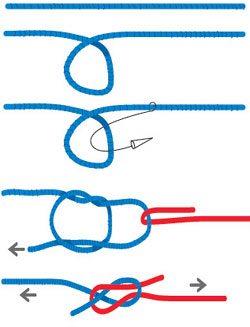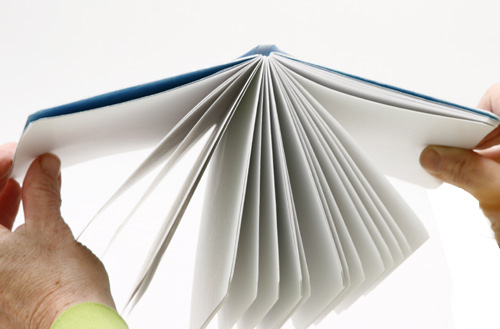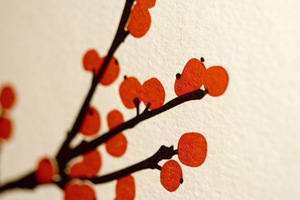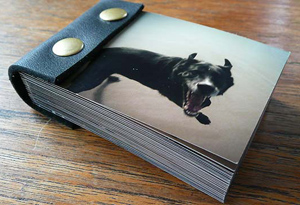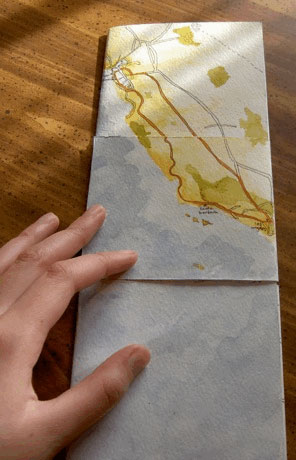 The other day my friend Cathy sent me to Britta Gustafson’s blog post about her flexagon — a map of three summers in the Bay Area. [If you don’t know about flexagons, they are similar to Jacob’s Ladder toys — flat “books” made from folded paper that are then unfolded, or flexed, to reveal a number of hidden faces. Wikipedia gives the history and probably more than you want to know…] Britta’s post has great pictures plus an animation toward the bottom showing the various panels on the book. Cathy knew I’d like the post because it’s both map & book related. I like that each flex of the flexagon becomes more specific.
The other day my friend Cathy sent me to Britta Gustafson’s blog post about her flexagon — a map of three summers in the Bay Area. [If you don’t know about flexagons, they are similar to Jacob’s Ladder toys — flat “books” made from folded paper that are then unfolded, or flexed, to reveal a number of hidden faces. Wikipedia gives the history and probably more than you want to know…] Britta’s post has great pictures plus an animation toward the bottom showing the various panels on the book. Cathy knew I’d like the post because it’s both map & book related. I like that each flex of the flexagon becomes more specific.
![]() Cathy’s email reminded me about the “10 Books in 2 Days” classes Cathy organized several years ago to celebrate the 10th anniversary of the San Francisco Center for the Book. She set up 5 stations a day, each with a different book structure or printing method and different instructor; participants rotated through the stations doing each activity. I was charged with designing a flexagon that participants could make. I found two resources that were a great help — Ed Hutchin’s instructions that number the panels so you can tell if you’ve made the thing correctly when you try to flex the panels, and the Flexagon Portal with more instructions and videos and how-tos for making various shaped flexagons. Ed also has a page of examples with pictures of all the panels.
Cathy’s email reminded me about the “10 Books in 2 Days” classes Cathy organized several years ago to celebrate the 10th anniversary of the San Francisco Center for the Book. She set up 5 stations a day, each with a different book structure or printing method and different instructor; participants rotated through the stations doing each activity. I was charged with designing a flexagon that participants could make. I found two resources that were a great help — Ed Hutchin’s instructions that number the panels so you can tell if you’ve made the thing correctly when you try to flex the panels, and the Flexagon Portal with more instructions and videos and how-tos for making various shaped flexagons. Ed also has a page of examples with pictures of all the panels.
![]() If you’d like to try to make one, download this PDF of “A Bookmaker’s Bag ‘o Tricks” flexagon I designed for Cathy’s event. It’s 2-sided and has 2 flexagons. The top half is for practice, with the numbers as on Ed’s instructions. Once you’ve mastered the folding, use the bottom half to make the flexagon.
If you’d like to try to make one, download this PDF of “A Bookmaker’s Bag ‘o Tricks” flexagon I designed for Cathy’s event. It’s 2-sided and has 2 flexagons. The top half is for practice, with the numbers as on Ed’s instructions. Once you’ve mastered the folding, use the bottom half to make the flexagon.

